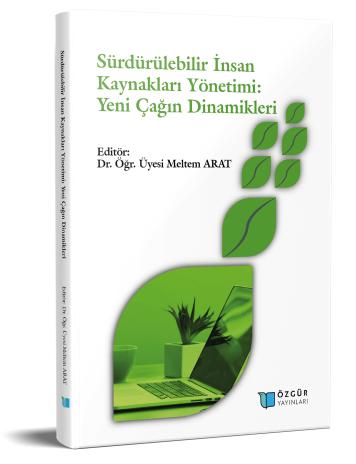
Sustainable Human Resources Management: Dynamics of New Age
Synopsis
Due to the continuously changing dynamic roles of contemporary Human Resources Management (HRM), the department now plays a more active role in the formation of institutional policies and strategies. Sustainability—through the incorporation of the Sustainable Development Goals (SDGs), Green HRM, corporate social responsibility frameworks, and human–artificial intelligence interaction—has become applicable across nearly all HR functions. Among these, the management of compensation and benefits stands out as one of the most critical functions supporting sustainability-related goals and objectives. HRM departments play an expanding role in integrating all these practices into corporate strategic management.
Chapter 1 investigates how HRM, through the application of artificial intelligence, can increase the accessibility of sustainability goals and targets. In the short term, AI applications may improve organizational efficiency and strengthen employee engagement. In the long term, they may enable the achievement of sustainability goals and create competitive advantage. However, issues such as security, ethics, and the impact on the workforce must be considered in the application of AI.
Chapter 2 emphasizes HRM's key role in achieving the SDGs and explores how HR functions can be structured accordingly. While HRM works on sustainability at the micro level for organizations, it may simultaneously contribute to broader national sustainability objectives.
Chapter 3 analyzes the relationship between Sustainable HRM (S-HRM) and corporate social responsibility. While assessing how three main guiding frameworks can shape S-HRM policies, the chapter also highlights the disadvantages that may arise in this long-term transformational process—such as difficulties in integrating with corporate strategies, insufficient budget allocation, challenges in performance monitoring, evaluation and improvement processes, and inconsistencies between discourse and action.
Chapter 4 evaluates how the environmental, social, and economic dimensions of sustainability can be holistically incorporated into strategic management. Achieving sustainability goals and objectives through Green HRM policies and practices not only provides competitive advantage but also strengthens the institution's public image.
Chapter 5 examines the key role of strategic management in achieving institutional sustainability goals and objectives. Strategic management is a managerial tool used by organizations to formulate and realize forward-looking visions. The chapter outlines methods within strategic management that facilitate data-driven decision-making and implementation.
Chapter 6 explores the importance of compensation and benefits management in reaching institutional sustainability goals. In organizations engaged in sustainability efforts, compensation and benefits are not merely costs but also investment tools. Fair and transparent compensation policies are believed to enhance employee motivation and improve institutional efficiency. In this way, the employer brand may be established or reinforced. Compensation and benefits management is a strategic function with potential long-term impacts.
Meltem ARAT

